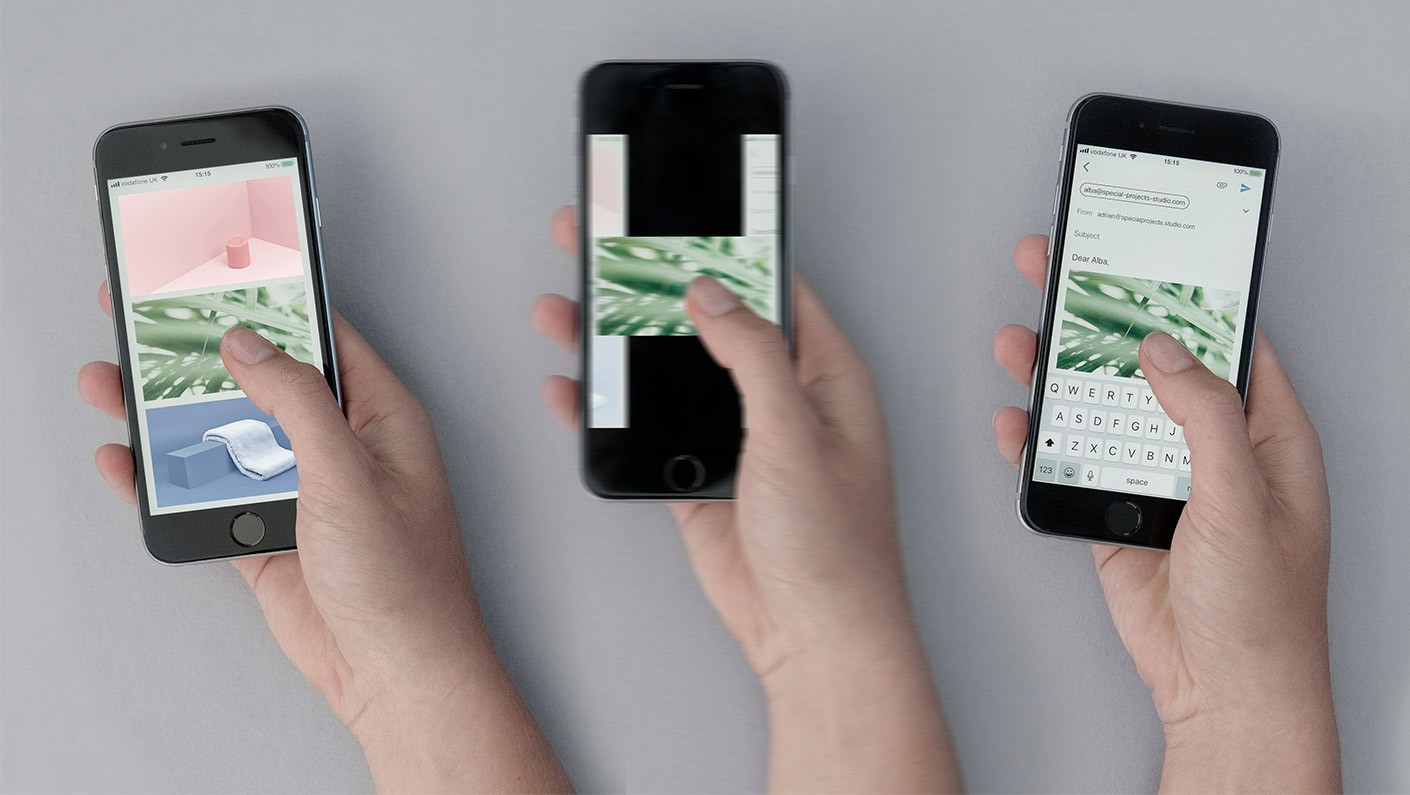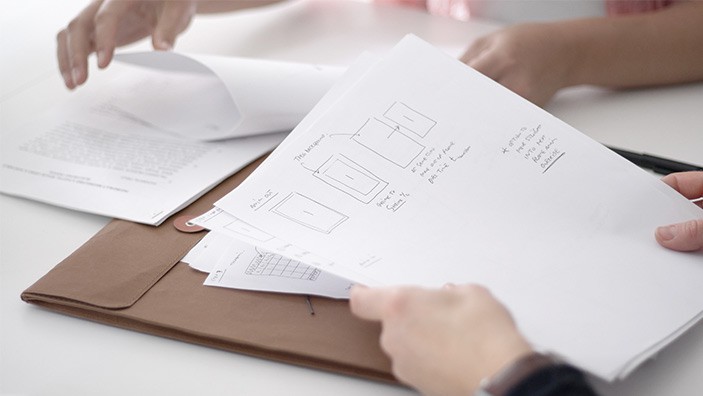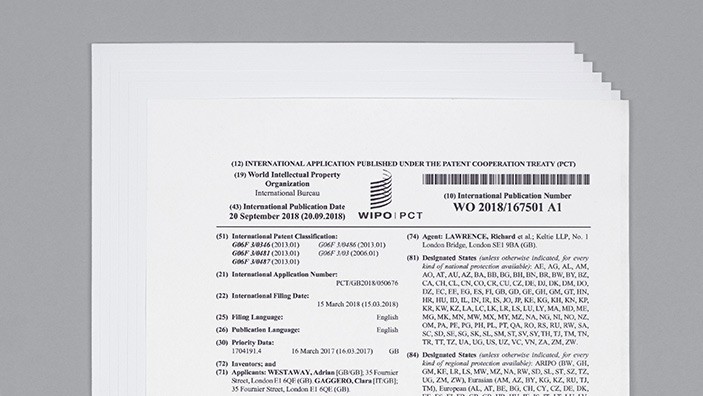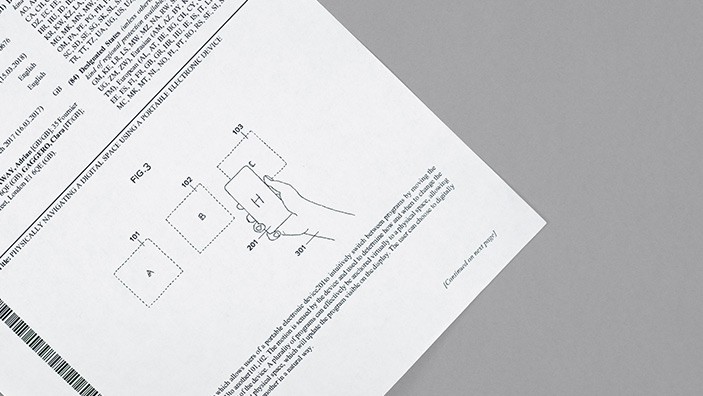Client
Special Projects
Year
2018
Problem
Having to move between different apps on a smartphone in order to complete tasks results in increased cognitive load and disrupted flow.
Solution
A mindful user interface that reduces your cognitive load allowing you to remain focused on the task at hand.
Press
Fast Company, BGR, WIRED, VentureBeat, Dexigner, Phone Arena, Yanko Design, Axis Magazine Japan, DesignTaxi, Apple Insider, The Daily Mail, Topes De Gama, Springwise, Gizmodo Japan, Core77, Tech News Weekly, Gizmodo
—
Awards
Related Projects
Magic Tableware
Moving Buttons
Google AI
Envelope
Out of the Box
Paper Phone
Bit Planner
Covid-19 App Ideas
NFC Cards
Moving Buttons
Google AI
Envelope
Out of the Box
Paper Phone
Bit Planner
Covid-19 App Ideas
NFC Cards
Download
Patents
Keywords
Augmented Reality, UX, UI, Mindful Interface, Magical Interactions
Magic UX
Smartphones and small screens have made their way into our everyday lives, transforming the way we communicate and work. Despite many benefits over traditional analogue tools, some digital interactions are actually more complex and frustrating than their physical equivalents.
The moment when you move between apps, copying text from a webpage into an email, for example, is more complex on a small screen than it would be in the physical world, interrupting flow and increasing the cognitive load of a simple task.
We discovered that this was a problem many people experienced across all apps - it didn’t matter if you were writing a report for work or booking a holiday. The problem lived in the space between the apps, a sort of no man's land.
This doesn’t happen when you work at your desk. We found that people often lay out their work tools, such as notepads, pens, and reports in specific arrangements in front of them, allowing them to move between tasks by simply shifting their gaze and moving their hands.
Inspired and intrigued by these natural and fluid interactions we have with the physical world, we became interested in ways of recreating them in the digital space.
Magic UX is a spatial user interface which allows users to virtually “pin” apps to a physical space. Every time you move your device to that space, the same app will open on your screen. There’s no limit to how many apps you can pin, allowing you to build a virtual desktop to suit your needs at that moment in time.


"Magic UX totally reinvents how we use phones, and it’s brilliant. Please, someone build this for all of us!"
Jesus Diaz
Fast Company
Fast Company
"‘Magic UX’ is the most impressive thing we’ve seen on a smartphone in years."
Zach Epstein
BGR
BGR
You can physically move content between apps just by dragging it through space. For example, you can copy text from one app to another by simply selecting it and dragging and dropping it into another app by moving your phone. The natural flow and familiarity of this movement reduces your cognitive load and allows you to stay focused on the task at hand. Metadata linked to content can be copied and moved too. For example, dragging a calendar entry into an email will automatically create a text invitation. Dragging a map entry into that same email will update the text with the location.
Multiple desktops can be created temporarily based on your needs or linked to a location, for example, a suite of apps could automatically open when you arrive at your WeWork desk. Also multiple users can share the same virtual space, allowing them to drag and drop content into each others devices seamlessly.
Multiple desktops can be created temporarily based on your needs or linked to a location, for example, a suite of apps could automatically open when you arrive at your WeWork desk. Also multiple users can share the same virtual space, allowing them to drag and drop content into each others devices seamlessly.

"We rarely use physical space to navigate the digital world. The way humans behave can really enrich our digital interactions, and that’s what inspired us to create Magic UX."
Clara Gaggero Westaway
"I’m impressed by the originality of this concept."
Bruce Sterling
Wired
Wired
While the invention is destined to be integrated into the operating system, it can also be used within an app, helping the user navigate between the different parts of that app.
We have fully patented the invention and created a working prototype, and looking to license the technology with leading technology companies to integrate this interaction into every smartphone operating system, making our everyday interactions simpler and more delightful.
Building on existing smartphone technologies, Magic UX is both a practical solution to the problems of smartphone multitasking and – as our physical and virtual worlds converge – a timely vision for the future of navigation in the digital realm. This is an interaction designed to become invisible and forgotten, letting you focus on the task at hand.
We have fully patented the invention and created a working prototype, and looking to license the technology with leading technology companies to integrate this interaction into every smartphone operating system, making our everyday interactions simpler and more delightful.
Building on existing smartphone technologies, Magic UX is both a practical solution to the problems of smartphone multitasking and – as our physical and virtual worlds converge – a timely vision for the future of navigation in the digital realm. This is an interaction designed to become invisible and forgotten, letting you focus on the task at hand.
















